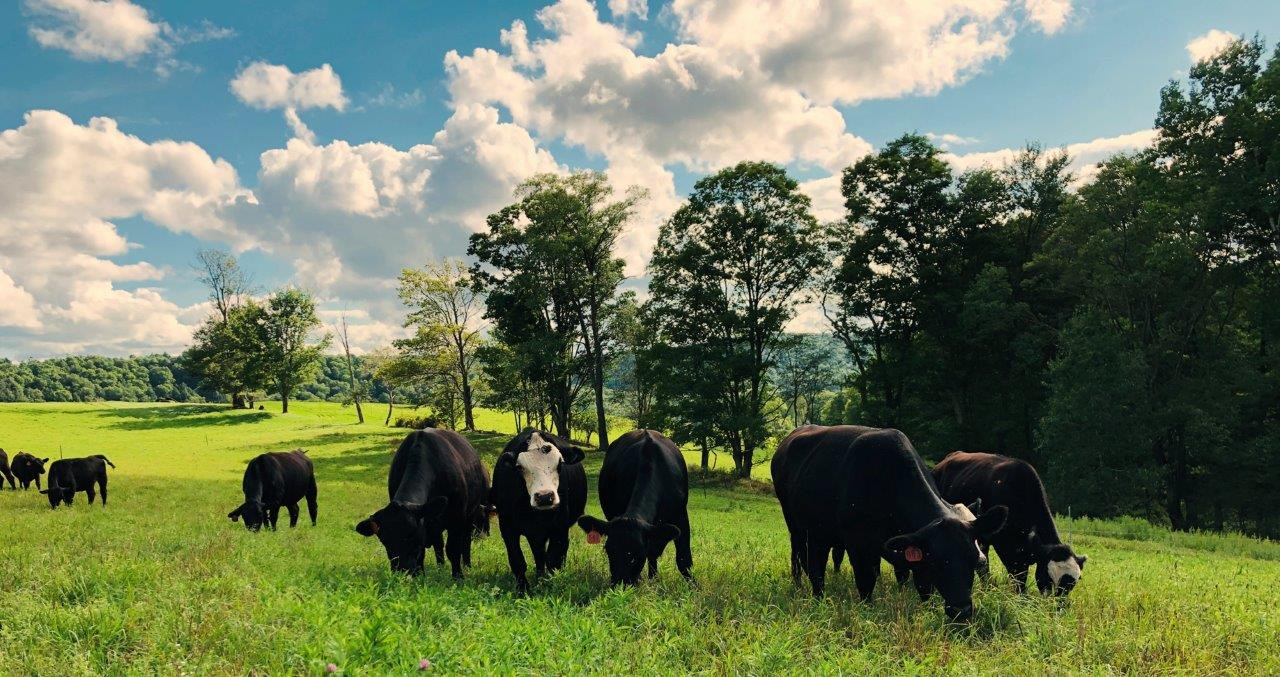Grass-fed beef vs. Grain-fed beef, which is the healthier option?
posted on
January 17, 2022

Not all beef is created equal. When it comes to nutrition, 100% grass-fed beef is superior to grain-fed. .
Find out more with these 5 health benefits of grass-fed beef:
1. Grass-fed beef is leaner.
When compared to grain-fed beef, grass-fed beef is leaner and lower in saturated fat. However, just because it’s lean, doesn’t mean it is lacking any in flavor and tenderness! [1]
Grass-fed beef contains higher levels of omega-3s in the fat fibers. This can give the beef a sort of a grassy taste. This taste is from all the grasses and forage they eat out on pasture.
The fat on grass-fed beef tastes delicious and is a rich yellow color from the high levels of beta carotene absorbed from all that grazing!
Cooking Tip: Because grass-fed beef is leaner than grain fed beef it tends to cook more quickly. Be sure to bring your beef to room temperature before cooking and cook at a lower temperature to better control the doneness.
2. Grass-fed beef contains healthy Omega-3 fats.
Grass-fed beef can contain up to five times more heart healthy Omega-3 fatty acids than grain-fed beef. [2]
Some of the benefits of Omega-3’s include:
- Reducing the risk of heart disease and causes of death associated with heart disease
- Reducing severity of symptoms associated with diabetes
- Reducing pain associated with rheumatoid arthritis
- Reducing risk of osteoporosis and bone loss
- Improving health and reducing symptoms for those with autoimmune disease
- Helping those with anxiety, depression or bipolar disorder
- Reducing risk of various types of cancers
- Improving cognitive function
The body does not make Omega-3 fatty acids so they must be obtained from foods, and grass-fed beef is a good source of Omega-3s. [8]
3. Grass-fed beef has more essential vitamins and minerals.
When comparing grass-fed to grain-fed, grass-fed beef contains more vitamins and minerals like zinc, iron, B vitamins, Vitamin E, glutathione, and Vitamin A carotenoids like beta-carotene. [4] [5]
These essential vitamins help boost our immunity, strengthen our bones, heal wounds, help eyesight and assist in obtaining energy from food, among multiple other functions.
These vitamins and minerals play a vital part in keeping us healthy and keeping our systems functioning properly. When we become deficient in any one vitamin or mineral, it can cause a number of health problems that we see today from people eating nutrient deprived foods.
Most conventionally grown foods contain less nutrients now than they did in the past due to being grown in depleted over farmed soils. [7]
4. Grass-fed beef contains cancer fighting CLA (conjugated linoleic acid).
CLA is a fatty acid and antioxidant that is important for good health. Grass-fed beef contains up to twice as much CLA than grain-fed beef.
CLA is unique because it is one of the only cancer fighting nutrients derived from meat. A study conducted on women who were given high amounts of CLA-rich foods had roughly a 60% lower risk in breast cancer over those who had little to no amounts of CLA in their diet. Wow! [3]
5. Grass-fed beef can reduce the risk of heart disease.
The CLA found in grass-fed beef also helps prevent heart disease.
Grass-fed beef is also packed with those heart healthy omega-3 fatty acids and antioxidants like Vitamin E mentioned above.
And, it also contains less unhealthy fats and lower amounts of bad cholesterol (LDL), which is a known marker for heart disease. [4]
Bottom line, grass-fed beef is healthier than meat that comes from grain-fed cows. It naturally contains a healthier nutritional profile.
Even if you can’t buy grass-fed beef all the time, adding some Wolf Oak Farm 100% grass-fed beef into your diet can help improve your diet and leave you feeling good about eating red meat.
Sources:
- “Impact of grass/forage feeding versus grain finishing on beef nutrients and sensory quality: the U.S. experience”
- “Red meat from animals offered a grass diet increases plasma and platelet n-3 PUFA in healthy consumers.”
- “Inverse association between dietary and serum conjugated linoleic acid and risk of breast cancer in postmenopausal women.”
- “A review of fatty acid profiles and antioxidant content in grass-fed and grain-fed beef.”
- “Beef, ground, unspecified fat content, cooked”
- “How to Make Your Meat as Healthy as Possible.”
- “Dirt Poor: Have Fruits and Vegetables Become Less Nutritious?”
- “Omega-3 vs Omega-6”





